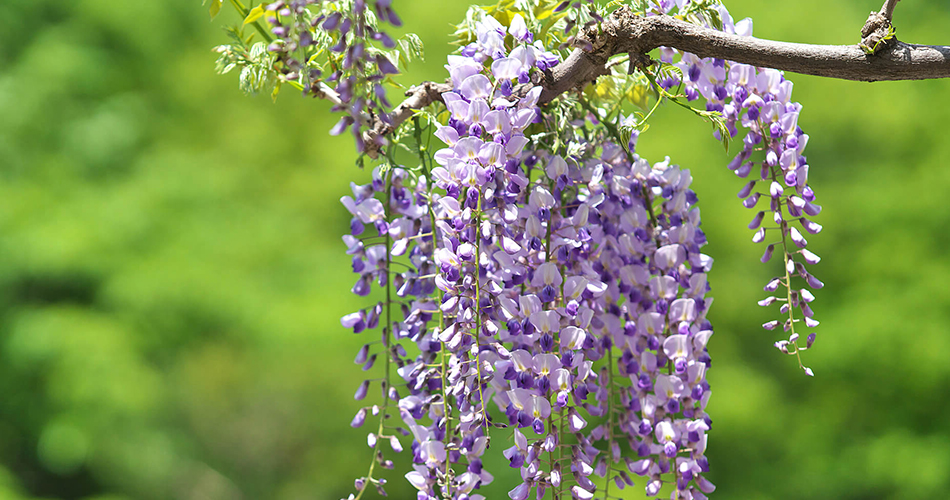Wisteria (wista’ria), a vine, is sacred in Japan, where its purple or blue flowers are more honored than the white. In the United States, it is trained to grow over gateways, on trellises and upon trees. Its long clusters of graceful purple, lavender, blue, or white flowers droop downward.
The wistaria, or wisteria, native to Japan, China, and North America, forms a genus of the family Leguminosae. The vine was named in honor of Caspar Wistar, a United States scientist. The individual blossoms are fragrant and are shaped like the pea blossom. The smooth, handsome leaves are divided into many leaflets. The vine may be grown from seeds or from cuttings. The finest varieties are produced by grafting on hardy stocks. It grows best in rich earth, though it will in dry, sandy soil. The species most commonly grown in the United States is a native of China. There is also a wild American wisteria, sometimes called the kidney-bean tree, which grows wild from Virginia to Florida. Its clusters are shorter than those of the oriental species, but its flowers are fragrant and beautiful.


Be First to Comment